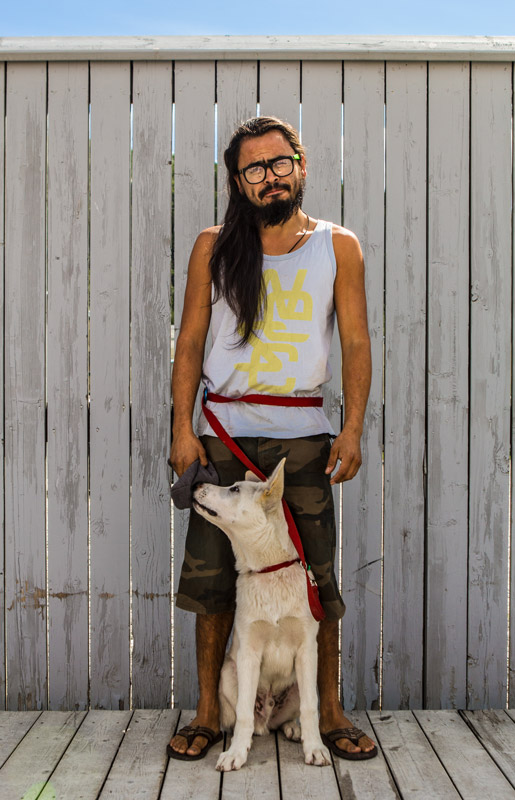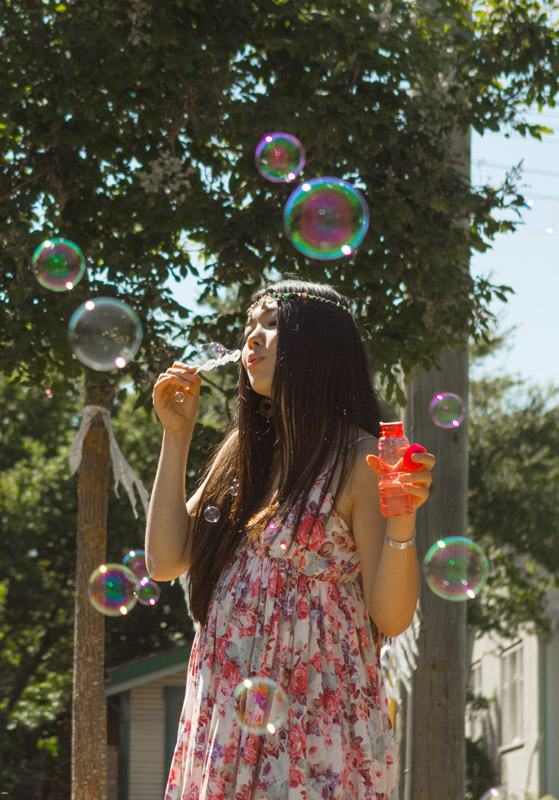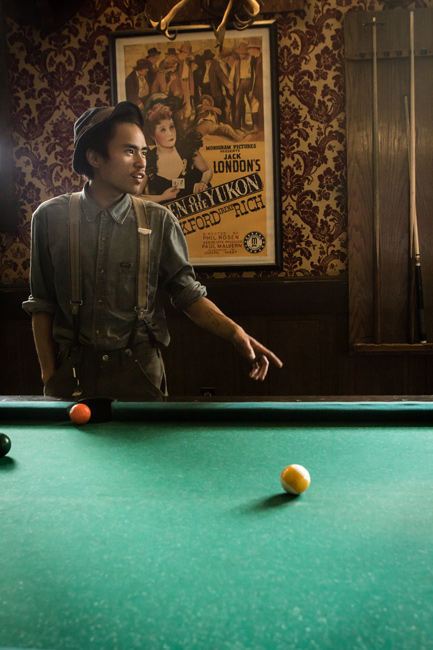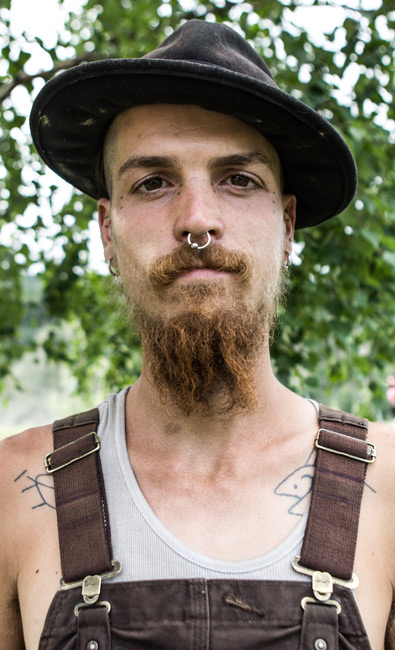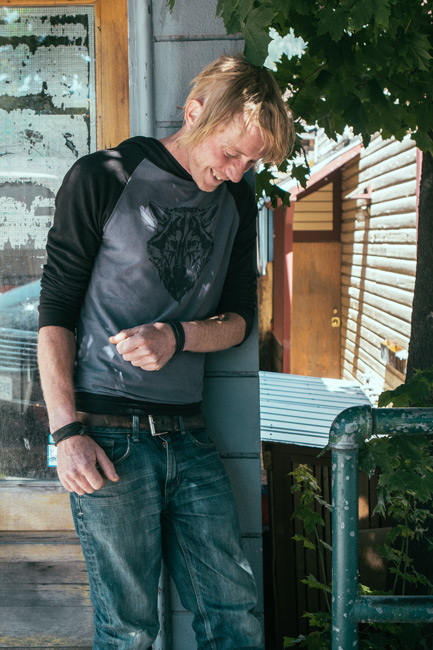[October 27, 2020]
By Emily Bremner
The dimly lit room, resembling something of a tavern, serves as an entrance into Vanessa Tignanelli’s Wilds of the West series. The young man in the photograph – RJ – is seen wearing suspenders. His black-rimmed hat, tilted to rest on the back of his head, reveals both his forehead and perhaps something of his character. The room is reminiscent of a small-town haunt. Printed wallpaper reveals the age of the place. Behind him is an old poster, in front of him a pool table. At first glance, it is easy to notice the largely male presence of the characters whom Tignanelli has chosen to depict, prompting the question, did she choose them or did they choose her? A passing thought, but one worth asking if you are familiar with this storyteller’s body of work. For as much as Tignanelli goes out looking for such muses, they also find their way to her, as if they know that she can tell their story in a way that no one in their life has ever succeeded at pulling out of them. Most of the photographs are taken outside, and always on a clear day, bringing light to the beauty in the cracks of the not-so-common. It is worth questioning why she has chosen only one female, one who, in contrast to the males – tattooed, bearded, and sun-worn – appears incredibly, perhaps even artificially, feminine.
Some of the characters that Tignanelli depicts seem to let her in more than others. The photograph of Mo Haroun succeeds also at inviting the viewer in, not just to his physical space and its surroundings, but to a human and to a life. He appears to be an outlier, granted with a strong marking on his chest, a symbol of infinity signalling limitlessness or eternity. Sitting towarda corner, he rests somewhat uneasily, protected by two walls instead of one, although he still has a view out to the vast greenery that surrounds his upstairs apartment. Tignanelli’s work is not so much about taking pictures as it is about relating to the other. Her photographs are the product of her seeing and of her subjects being seen. Her craft is in her ability to see the other –and not right away but through the slow and steady process of unfolding what has always been there if only someone took the time to see it. Her work transcends the superficial, revealing something much rawer, as if her subjects are confronting the viewer with the unrevealed or less-allowed parts of themselves. Ultimately, Tignanelli is inviting the viewer into those parts, into the wild within them,as the characters’ skin, clothes, unshaved beards, and expressions take us somewhere we do not dare go.
There is only one who, plain-faced, looks right into the camera. Mitch Pridham’s show of healthy skepticism is a reminder that not everyone wants to offer up the lesser-known aspects of themselves. And yet Mitch is the one transient whom Tignanelli is able to get close to, and whose eyes can be seen clearly. This says everything about her, her work, and her approach. It takes time. It takes meeting him in his skepticism and leaving her camera at home. In the same way that these minimalist, guitar-playing, old-time-heralding characters are drawn to safe havens such as Nelson or Dawson City, Tignanelli is drawn to the places in the world where such characters gather, hoping to catch far more than a glimpse of who they are and what propels them to live as they do – and, perhaps, understanding something of herself in the process. She does not want them just to be remembered, she wants them to be known.
Fittingly, the series ends with Patchy Owl, who, on this trip to Dawson City, gave Tignanelli the stick-and-poke tattoo (a marking indicative of a life, or a summer, on the road) still found on the inside of her biceps. The tattoo, a reference to Shel Silverstein’s book The Missing Piece Meets the Big O, is perhaps the perfect link between her and the transient characters she so thoughtfully pines after, with her camera in tow. Vagabonds, wild men, wanderers, transients, drifters, creatures – they are human, and not so different in fact from her or us, perhaps only more openly unravelled. If you look closely, they (and she) can teach us something about life. The tattoo is also a reminder that we do not fit because we fit in, we fit because we are.
Vanessa Tignanelli is a Canadian documentary photographer and videographer based in North Bay, Ontario. She combines her training in conceptual art, journalism, and filmmaking in work that moves beyond the typical snapshot to the more significant environmental portrait, encapsulating the essence of those who share their stories with her. Her subjects reconcile opposing ideas found in traditional societies, taking on themes that confront sexism, ageism, and classicism. www.vanessatignanelli.com
In her professional life, author and designer Emily Bremner applies the principles of collaborative and cross-sector work as seeks to humanize the current challenges of gentrification, food security, and climate cooperation. She spent three years in Denmark pursuing post-doctoral studies in leadership. With a Danish co-author, she is writing a book on the new world of work.

